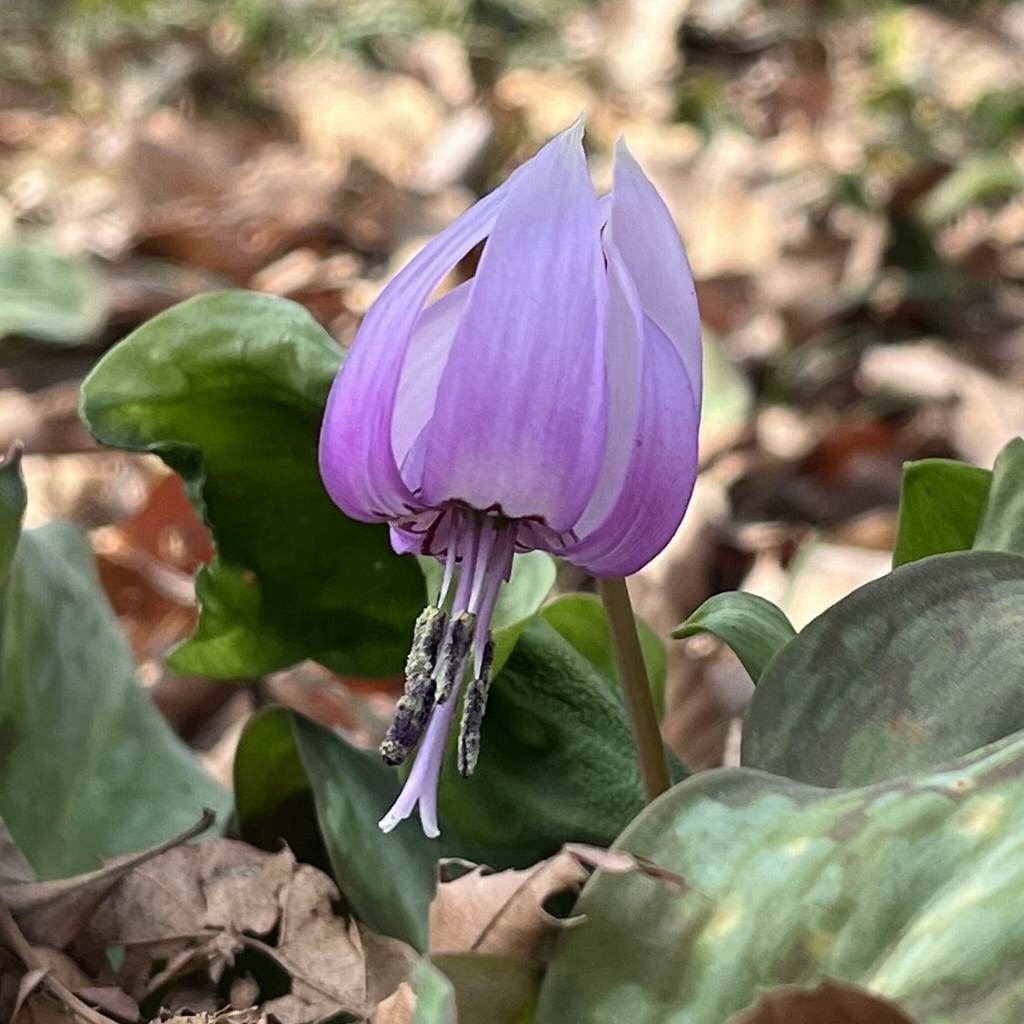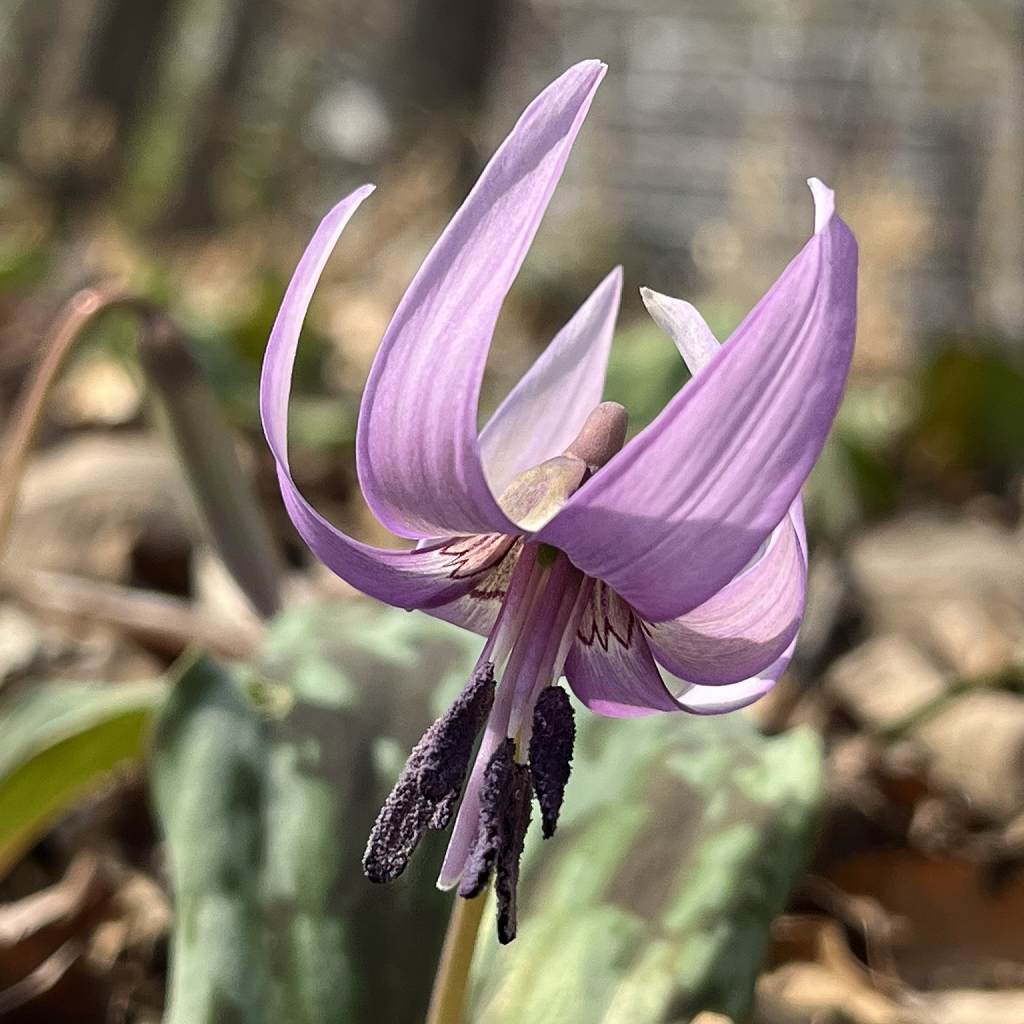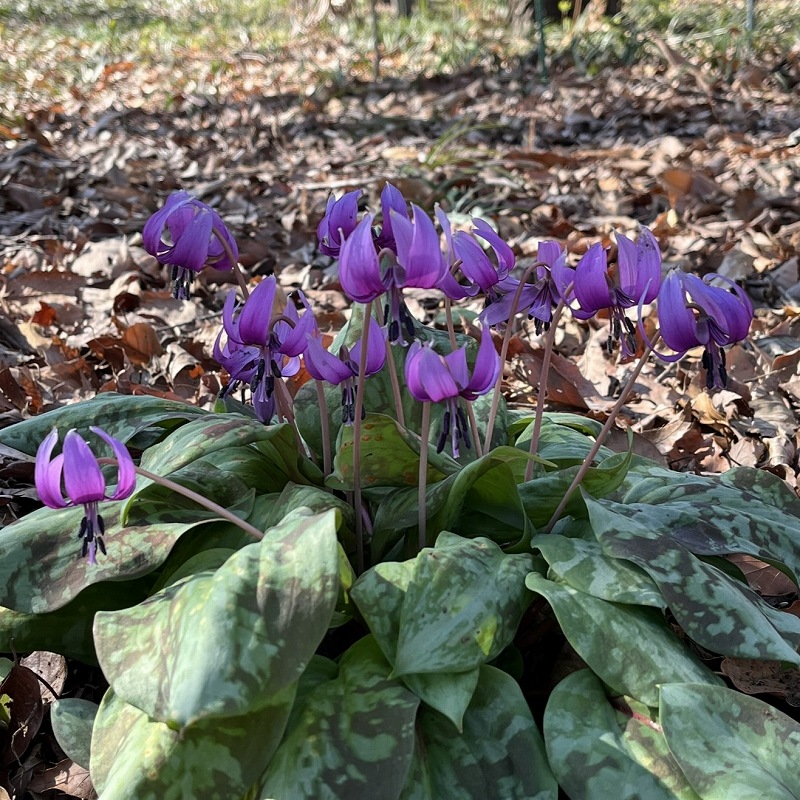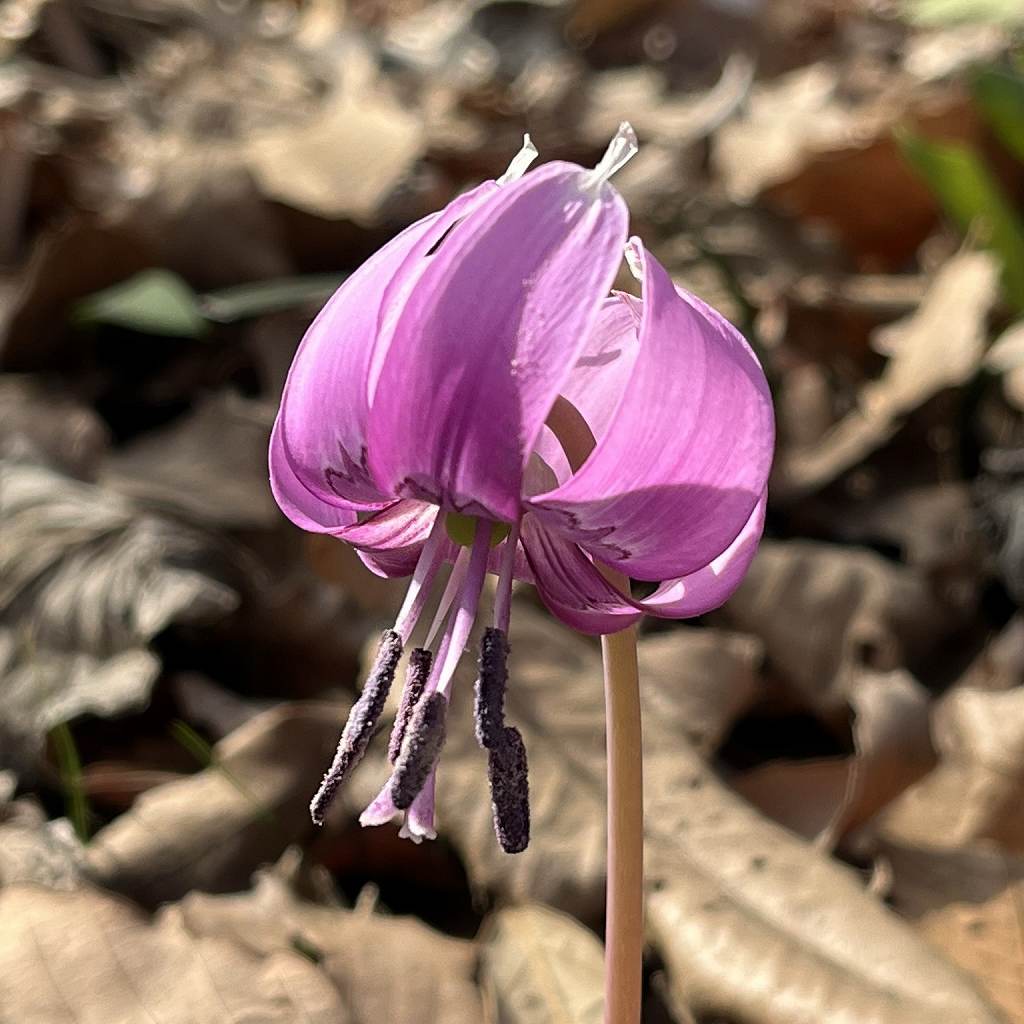カタクリは林床に陽が入る春の4~5週間だけ地上に葉を伸ばし、1年のほとんどを地下で過ごします。「春の妖精」と呼ばれるお花の1つ。
Dogtooth Violet grows its leaves on the ground only for 4 to 5 weeks in spring when the sunlight enters the forest floor, and spends most of the year underground. One of the flowers called “Spring ephemeral”.
【仮名】カタクリ
【和名】片栗
【英名】Dogtooth Violet, Katakuri
【学名】Erythronium japonicum
【誕生】01/ 28, 03/ 24, 03/ 25, 03/ 26, 04/ 24
【開花】03, 04月
【花色】Purple






カタクリ
カタクリの序
カタクリはユリ科の多年草。日本では北海道から本州、四国、九州まで、国外ではロシアから朝鮮半島、中国まで分布しています。春先に陽が入る落葉樹の林床に群生。その4~5週間だけ地上に葉を伸ばし、1年のほとんどを地下で過ごします。「春の妖精」と呼ばれるお花の1つ。
カタクリの根
カタクリの根は多肉質の鱗茎で、和名の由来の1つ。栗の実が2つに割れたような形をしているため、「片栗」と呼ばれました。その鱗茎から採れた澱粉が昔の「片栗粉」。生薬として整腸や胃腸炎、病後の滋養強壮などに用いられました。なお、現在の片栗粉は馬鈴薯や甘藷が原料。
カタクリの葉
カタクリの葉は根生し、厚くて軟らかい長楕円形に模様が入ります。1枚だけ生えては枯れるのを毎年繰り返し、8年ほどで2枚になってから開花開始。葉が最初に片方だけ生えて鹿子柄だから「片葉鹿子」とも呼ばれました。若葉は天ぷらや油炒めに、軽く茹でてお浸しや和え物に。
カタクリの花
カタクリの花は地中から伸ばした茎の先で咲きます。花冠は下を向き、花被片が強く反り返って6枚、雄しべが6本、雌しべが3裂。花の咲き方から古くは「傾籠」、転じて「堅香子」とも呼ばれました。ラテン語の属名エリスロニウムは「赤色」という意味で、欧州種の花色に由来。
カタクリの実
カタクリの実は蒴果で、熟すと3つに裂けて中の種子を落とします。種子には蟻が好む脂肪酸、アミノ酸、糖などを含む「種枕」が付着。蟻によって株から離れた巣の近くまで運ばれます。種子は発芽当年に糸のような細い葉が伸長。2年目から長楕円形の葉が1枚だけ生え始めます。
Dogtooth Violet
Dogtooth Violet is a perennial plant of the Liliaceae family. In Japan, it is distributed from Hokkaido to Honshu, Shikoku, and Kyushu, and outside of Japan, it is distributed from Russia to the Korean Peninsula and China. Grows in colonies on the forest floor of deciduous trees that receive sunlight in early spring. Leaves grow above ground for 4 to 5 weeks and spend most of the year underground. One of the flowers called “Spring ephemeral”.
Dogtooth Violet root is a fleshy bulb, one of the origins of the Japanese name. It was called “half of chestnut” because it looks like a chestnut split in two. The starch harvested from the bulb is the old “starch”. It was used as a herbal medicine for intestinal regulation, gastroenteritis, and nourishing tonic after illness. Potatoes and sweet potatoes are the raw materials for current starch.
Dogtooth Violet leaves are basal, thick, soft, oblong, and patterned. Each year, only one leaf grows and dies, and after about eight years, two leaves appear before flowering begins. It is also called “one-leaf fawn” because only one leaf grows first and has a pique pattern. Young leaves can be used for tempura or stir-fried in oil, or lightly boiled.
Dogtooth Violet flowers bloom at the tip of stems that extend from the ground. The corolla faces downward, and the tepals are strongly reflexed into 6 pieces, 6 stamens, and 3 lobed pistils. From the way the flowers bloom, it used to be called “inclined basket” in olden days. The Latin genus name Erythronium means “red”, derived from the flower color of the European species.
Dogtooth Violet fruit is a capsule that splits into three when ripe and drops the seeds. The seeds have an “Elaiosome” that contains fatty acids, amino acids, sugars, etc. that ants like. Carried by ants to near the nest away from the plant. In the year of germination, the seeds grow thin, thread-like leaves. From the second year, only one oblong leaf begins to grow.


